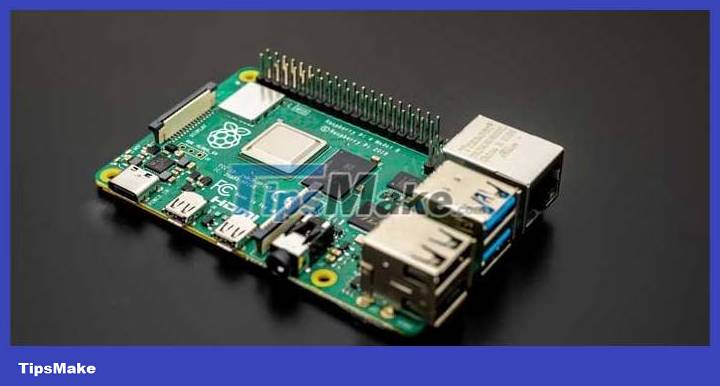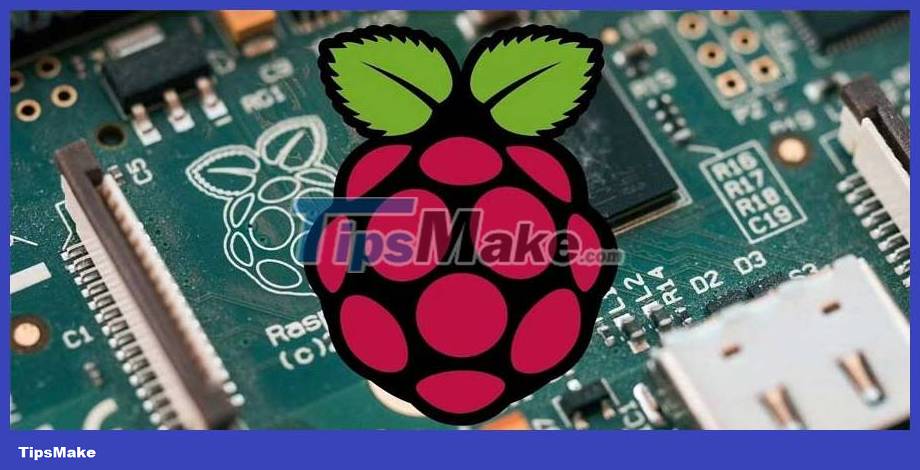How to install and run Arduino IDE on Raspberry Pi
If you are familiar with the Arduino IDE programming environment , you may also want to use it on Raspberry Pi. Here's how to install and run Arduino IDE on Raspberry Pi .

With the Raspberry Pi single-board computer , you can run a variety of applications, including the popular Arduino IDE (integrated development environment). This means you can use it to easily program microcontrollers with a Raspberry Pi computer via USB to create interactive electronics projects.
Now let's learn how to install and run Arduino IDE on Raspberry Pi.
Request:
To run Arduino IDE on Raspberry Pi, you need the following components:
- Raspberry Pi 3 or 4 board with suitable power supply.
- HDMI monitor or TV.
- microSD card (minimum 8GB for official Raspberry Pi OS).
Set up Raspberry Pi

Raspberry Pi 4, thanks to its advanced processing power and abundant RAM, is the preferred choice for installing Arduino IDE. However, Pi3 can also complete this task well. If you haven't done so already, install the Raspberry Pi operating system onto the microSD card using the Raspberry Pi Imager tool.
After completing the installation, insert the microSD card into the Raspberry Pi and connect it to the display. If you don't have a display, you can still access your Raspberry Pi remotely on another computer via VNC.
Download Arduino IDE
Arduino IDE 2.2.1 is exclusive to x86-64 systems, while Raspberry Pi operates on ARM architecture. However, the older IDE version 1.8.19 has comparable capabilities and provides support for the ARM architecture. First, start the terminal by clicking its icon at the top of the desktop environment or simply pressing Ctrl + Alt + T . Then, proceed to download the Arduino IDE with the following command:
wget https://downloads.arduino.cc/arduino-1.8.19-linuxarm.tar.xzInstall Arduino IDE
Once the download is complete, use the command below to retrieve the required file in the current terminal session:
tar -xf arduino-1.8.19-linuxarm.tar.xzThen navigate into the arduino-1.8.19 folder :
cd arduino-1.8.19To complete the installation, simply run the install.sh command :
sudo ./install.shRun the IDE

To find and open the Arduino IDE, click the Raspberry logo in the upper left corner of the Raspberry Pi desktop, then select Programming > Arduino IDE . This application will open and you can start programming with it. As usual, you need to connect the microcontroller board via USB to flash programs to it.
Explore, test and innovate
You have successfully set up Arduino IDE on Raspberry Pi. You can now upload Arduino programs to the connected microcontroller, just like you would with a regular computer.
In the Arduino IDE, you will find a wealth of comprehensive libraries and a rich range of tools. The IDE simplifies the microcontroller programming process, making it fun and accessible.
You should read it
- How to install Arduino IDE on Debian 10
- How to install the Arduino IDE on CentOS 8
- What is Arduino and its applications in life
- How to install Arduino IDE in Ubuntu
- Synthesis of useful commands to code the Arduino
- Why is the new Arduino Uno R4 a game changer for manufacturers?
- How to add libraries in Arduino
- How to program Arduino with an Android phone
May be interested
- Why is the new Arduino Uno R4 a game changer for manufacturers?
 arduino, an open source platform that has been loved by hobbyists and manufacturers for over a decade, recently launched the newest option for the uno series, the arduino uno r4.
arduino, an open source platform that has been loved by hobbyists and manufacturers for over a decade, recently launched the newest option for the uno series, the arduino uno r4. - How to use Raspberry Pi Imager to install Raspberry Pi OS
 raspberry pi foundation recently released a new app for burning sd cards for raspberry pi. the new program, called raspberry pi imager, launched on march 5, 2020.
raspberry pi foundation recently released a new app for burning sd cards for raspberry pi. the new program, called raspberry pi imager, launched on march 5, 2020. - How to install Android on a Raspberry Pi
 although there are many operating systems available for the raspberry pi, you may prefer to stick with a linux-based operating system. but what about the lack of touch screen support? perhaps the best solution is to install android on a raspberry pi.
although there are many operating systems available for the raspberry pi, you may prefer to stick with a linux-based operating system. but what about the lack of touch screen support? perhaps the best solution is to install android on a raspberry pi. - How to add libraries in Arduino
 ardunio libraries are frequently used programs available to help you learn about the limited number of ide sketches.
ardunio libraries are frequently used programs available to help you learn about the limited number of ide sketches. - How to program Arduino with an Android phone
 as an open source electronic platform, arduino boards are very popular for iot projects. although the standard way to use them is to connect the arduino usb ports to the computer, but you can also do so using bluetooth controller and android application.
as an open source electronic platform, arduino boards are very popular for iot projects. although the standard way to use them is to connect the arduino usb ports to the computer, but you can also do so using bluetooth controller and android application. - Download Arduino IDE 1.8.13: Great programming software for beginners
 today, knowing how to code and code is a very useful skill to have. arduino ide is a piece of software that makes the programming world more accessible to beginners, with a simple interface and a community-oriented system.
today, knowing how to code and code is a very useful skill to have. arduino ide is a piece of software that makes the programming world more accessible to beginners, with a simple interface and a community-oriented system. - How to start Raspberry Pi 3 from USB
 raspberry pi is a great, versatile software suite, with a variety of capabilities like running a media center or using as a radio.
raspberry pi is a great, versatile software suite, with a variety of capabilities like running a media center or using as a radio. - How to Use Ultrasonic Sensors in Arduino Project
 arduino is an open-source microcontroller platform used in many applications. arduino boards are able to read inputs such as light on a sensor or the press of a button and turn it into an output. this wikihow teaches you how to create an...
arduino is an open-source microcontroller platform used in many applications. arduino boards are able to read inputs such as light on a sensor or the press of a button and turn it into an output. this wikihow teaches you how to create an... - Learn Pi Imager, How to Use Raspberry Pi Imager
 the raspberry pi foundation recently released a new application for recording sd cards for the raspberry pi. the new program, called raspberry pi imager, launches march 5, 2020.
the raspberry pi foundation recently released a new application for recording sd cards for the raspberry pi. the new program, called raspberry pi imager, launches march 5, 2020. - How to connect two Arduino boards using I2C
 while a single arduino can accomplish many tasks, some projects may require the use of more than one board to handle different functions.
while a single arduino can accomplish many tasks, some projects may require the use of more than one board to handle different functions.










 Should I buy a custom or pre-built mechanical keyboard?
Should I buy a custom or pre-built mechanical keyboard? Is Fitbit's heart rate monitor accurate?
Is Fitbit's heart rate monitor accurate? What is No-Code AI and how to use No-Code AI
What is No-Code AI and how to use No-Code AI Things to know about Python's requirements.txt file
Things to know about Python's requirements.txt file How to use the Netstat command in Windows 11 to monitor network activity
How to use the Netstat command in Windows 11 to monitor network activity How to disable integrated graphics on Windows? When should this be done?
How to disable integrated graphics on Windows? When should this be done?